
Students will read each sentence and write the correct homophone on the blank.
- Subject:
- English
- Material Type:
- Activity/Lab
- Author:
- Ashley Harris
- Date Added:
- 07/25/2022

Students will read each sentence and write the correct homophone on the blank.
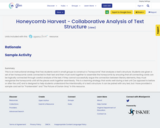
This is an instructional strategy that has students work in small groups to construct a "honeycomb" that analyzes a text's structure. Students are given a set of ten honeycomb cards connected to their text and then must work together to assemble the honeycomb by ensuring that all connecting cards can be logically connected through careful analysis of the text. If they cannot successfully argue the connection between literary elements, they must reorganize the honeycomb until all the pieces work together seamlessly. This is a learning strategy that works well during a text unit (as opposed to before or after the unit) and is designed to help students understand the intentionality of a text's structure. It can be paired with any text, but I have provided a sample card set for "Frankenstein" and "The Picture of Dorian Gray" in this resource.
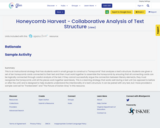
This is an instructional strategy that has students work in small groups to construct a "honeycomb" that analyzes a text's structure. Students are given a set of ten honeycomb cards connected to their text and then must work together to assemble the honeycomb by ensuring that all connecting cards can be logically connected through careful analysis of the text. If they cannot successfully argue the connection between literary elements, they must reorganize the honeycomb until all the pieces work together seamlessly. This is a learning strategy that works well during a text unit (as opposed to before or after the unit) and is designed to help students understand the intentionality of a text's structure. It can be paired with any text, but I have provided a sample card set for "Frankenstein" and "The Picture of Dorian Gray" in this resource.
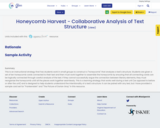
This is an instructional strategy that has students work in small groups to construct a "honeycomb" that analyzes a text's structure. Students are given a set of ten honeycomb cards connected to their text and then must work together to assemble the honeycomb by ensuring that all connecting cards can be logically connected through careful analysis of the text. If they cannot successfully argue the connection between literary elements, they must reorganize the honeycomb until all the pieces work together seamlessly. This is a learning strategy that works well during a text unit (as opposed to before or after the unit) and is designed to help students understand the intentionality of a text's structure. It can be paired with any text, but I have provided a sample card set for "Frankenstein" and "The Picture of Dorian Gray" in this resource.
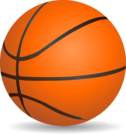
This review game was created to give students an interactive and competitive way to review unit material for test day. Teachers can modify the slides to incorporate any subject or unit to help their students review for a test.
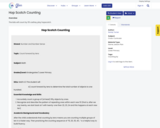
The kids will count by 10's asthey play hopscotch.
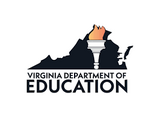
Estimating and finding the difference of whole numbersMathematics Instructional Plans (MIPs) help teachers align instruction with the Mathematics Standards of Learning (SOL) by providing examples of how the knowledge, skills and processes found in the SOL and curriculum framework can be presented to students in the classroom.
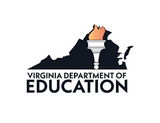
Determining elapsed time -- Mathematics Instructional Plans (MIPs) help teachers align instruction with the Mathematics Standards of Learning (SOL) by providing examples of how the knowledge, skills and processes found in the SOL and curriculum framework can be presented to students in the classroom.
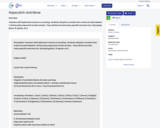
Teachers will implement a lesson on counting. Students will pick a number from a deck of cards labeled 1-20 then play hopscotch to that number. They will then do that many specific exercises (ex. 10 jumping jacks, 15 squats, etc.)
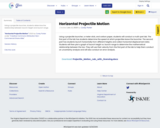
Using a projectile launcher, students determine the relationship between launch height and launch range.

Hospitality Tourism & Recreation is a course designed to introduce the student to the various aspects of Hospitality industry. It is currently estimated that 30% of all the jobs in the state of California are available in the hospitality and food service workplaces therefore emphasis is placed on meeting the needs for the growing number of resources and services in the local area. This class is designed to give the student basic skills needed to acquire an entry level job in lodging, recreation, travel event planning and theme park/ exhibition occupations.
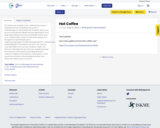
Dan Meyer has created many mathematics lessons centered around storytelling, along with a methodology for using these with students. Before you do any of his lessons, please see the explanation at his blog: https://blog.mrmeyer.com/2011/the-three-acts-of-a-mathematical-story/ To see all the lessons in a Google Docs spreadsheet, go to https://docs.google.com/spreadsheets/d/1jXSt_CoDzyDFeJimZxnhgwOVsWkTQEsfqouLWNN
C6Z4/edit#gid=0
The lessons are all CC BY, and you may edit these to fit your own students’ needs. The links from #GoOpenVA go to his own website because the structure of the lessons (including pertinent videos) is integral to the delivery of the lessons. Some lessons are stored as downloadable zip files, and these are noted as part of the link.

How do you track a disease? How do you determine if a blood sample contains a virus or a bacteria that could make millions of people sick? What type of information would you need to know to stop a disease from spreading? If you are interested in these questions then being an “Illness investigator” or a Clinical Laboratory Scientist (CLS) might be the right career path for you.

How do you track a disease? How do you determine if a blood sample contains a virus or a bacteria that could make millions of people sick? What type of information would you need to know to stop a disease from spreading? If you are interested in these questions then being an “Illness investigator” or a Clinical Laboratory Scientist (CLS) might be the right career path for you.
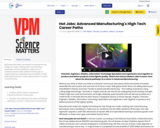
Manufacturers today are rapidly innovating the way things are made, creating new manufacturing techniques and scrambling to make sure our workforce has the skills needed to fill the jobs. In Virginia there is a projected annual shortfall of 11,000 skilled technicians for career opportunities in modern manufacturing.
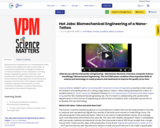
Biomechanical engineering is an interdisciplinary field of science that applies the rules and principles of mechanical engineering to biological systems. It combines elements of many disciplines, including biology, engineering, physics, chemistry, and mathematics to better understand how physical forces influence living organisms. A biomechanical engineer may find work in the medical, scientific, industrial or governmental sectors. It is also sometimes considered a subset of Mechanical Engineering or Biomedical Engineering.

Jobs in drug discovery and bioscience use math, biology and computer science to improve the lives of very sick people in a faster, safer way. If you do well in these subjects, this might be the field for you!

Cyber Security, the protection of our information via computers and the internet is one of the fastest growing industries in Virginia and around the world. According to the US Bureau of Labor Statistics Cyber Security Analysts (also known as Information Security Analysts) will grow by 37% over the next 10 years. That’s a much faster growth rate than the average for all other occupations.

Cyber Security, the protection of our information via computers and the internet is one of the fastest growing industries in Virginia and around the world. According to the US Bureau of Labor Statistics Cyber Security Analysts (also known as Information Security Analysts) will grow by 37% over the next 10 years. That’s a much faster growth rate than the average for all other occupations.
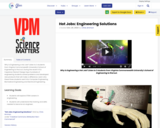
Why is Engineering a Hot Job? Listen to 3 students from Virginia Commonwealth University's School of Engineering to find out. During the recent VCU Capstone (Senior) Design Expo hundreds of engineering students solved problems and developed new products that will make a difference. Learn why these three students went into Computer Engineering, Biomedical Engineering and Electrical Engineering.